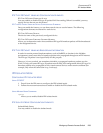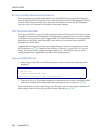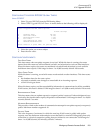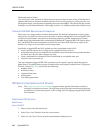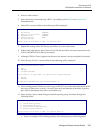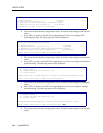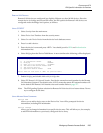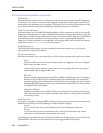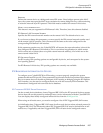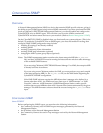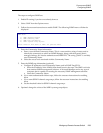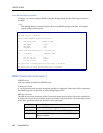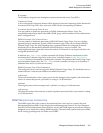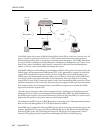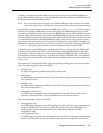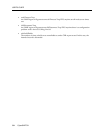
Workgroup Remote Access Switch 297
C
ONFIGURING
IPX
IPX-Specific Information for Devices
BRIDGING
Defines the remote device as a bridge and not an IPX router. Since bridges operate at the MAC
layer, the system must provide MAC layer emulation for remote bridge devices, while continuing
to route the network layer IPX protocol. This field must be enabled for remote LAN devices.
M
AKE CALLS FOR BRIDGE DATA
This feature is not yet supported for IPX Remote LANs. Therefore, leave this element disabled.
IPX R
EMOTE LAN NETWORK NUMBER
Specifies the IPX external network number on the remote LAN. The default value is none.
If you choose to change this parameter, you must specify the IPX external network number used
on the remote LAN in question. This value must be the same as the value configured for the
corresponding IPX Remote LAN interface.
If this parameter remains none, the CyberSWITCH will assume the network number is that of the
first configured IPX Remote LAN interface. This is convenient in applications in which remote
LANs consist only of clients (thus no explicit external network address), all of which are on the
same external virtual LAN.
IPX S
POOFING OPTIONS
For IPX routing, IPX spoofing options are configurable by device, and correspond to the system-
level spoofing options.
For IPX Remote LAN devices, IPX spoofing options are currently not available.
IPX BACKGROUND INFORMATION FOR DEVICES
To configure your CyberSWITCH for IPX routing, you must properly complete the system
parameters that are IPX-specific. These parameters are discussed in the first portion of this chapter.
But, for a remote device to be able to participate in IPX routing or bridging using the IPX Remote
LAN interface, you also need to configure that device with the necessary IPX information. This
information is configured in the on-node device database.
IPX T
RIGGERED RIP/SAP DEVICE BACKGROUND
On the on-node device database, choose Triggered RIP/SAP as the IPX protocol for those remote
devices that will use this protocol to exchange route/service information with the CyberSWITCH.
You can display these locally-configured remote devices from the WAN peer list.
When using an off-node server, you need to configure a list of IPX Triggered RIP/SAP routers.
At initialization time, Triggered RIP/SAP starts for all on-node devices whose selected protocol is
Triggered RIP/SAP. The information about IPX Triggered RIP/SAP may be fetched from an off-
node server, if applicable, and then Triggered RIP/SAP will start for the configured routers.



